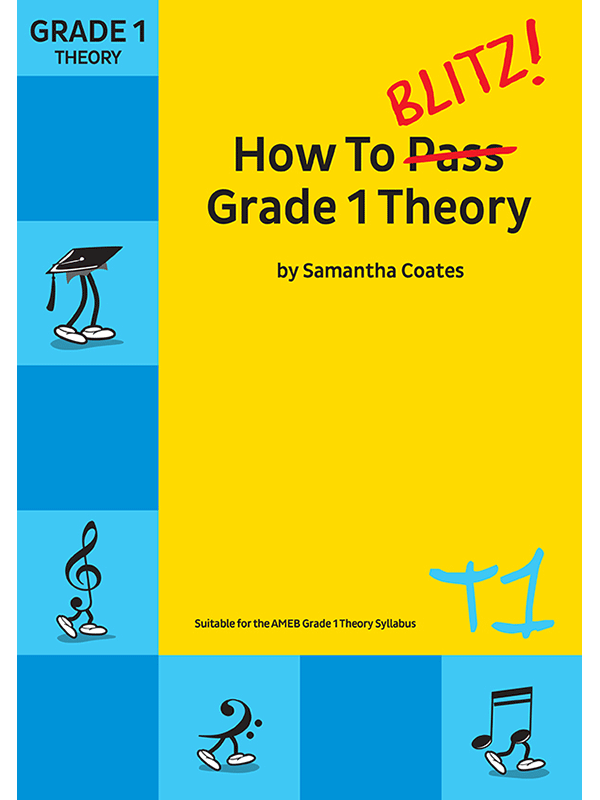How To Blitz! Grade 1 Theory
No more boring theory books! The unique feature of the ‘How to Blitz’ series is the conversational and informal style of the worksheets. Students are put at ease and find working through the texts an enjoyable experience.The workbooks are set out in a fun and easy-to-use format. Each concept is covered by step-by-step worksheets which ensure maximum understanding and minimum errors.
Overview
No more boring theory books! The unique feature of the ‘How to Blitz’ series is the conversational and informal style of the worksheets. Students are put at ease and find working through the texts an enjoyable experience.The workbooks are set out in a fun and easy-to-use format. Each concept is covered by step-by-step worksheets which ensure maximum understanding and minimum errors.
Recommended for
- Music Teachers
- Music Students
- Parents of Music Students
Introduction
How to Blitz! Theory Grade 1 contains more information, more revision and more worksheets than any other theory text book.
One of the best features is the clearest and easiest section on music notation ever written. It assumes you’ve never actually seen music before. If you already know how to read music, you will find this section SUPER EASY!!! Whizz through it and impress all your friends.
Although music theory applies to all instruments, not just piano, it is the piano keyboard that is most helpful in demonstrating certain things you need to learn, such as semitones and accidentals. The reason for this is that the piano keyboard is a visual pattern. If you are learning to play an instrument other than piano, you’ll find plenty of piano keyboard diagrams in the book to help you understand some of the concepts more easily.
| Subtitle | Suitable for the AMEB Grade 1 Theory syllabus |
|---|---|
| Publisher | BlitzBooks Publications |
| Series | How to Blitz! Theory |
| Pages | 80 |
| Format | Paperback |
Table of Contents
- A Little Bit About Rhythm
- Intro to Pitch Clefs, Notes and Stems
- Leger Lines
- Revision of Stuff
- So Far Sharps, Flats and Naturals
- Naming and Drawing Notes
- Tones, Semitones and the Major Scale
- Scale Degree Numbers
- Tiny Test
- Scales with Accidentals/Scale Worksheets
- Timed Test
- Naming the Key/More on Scale Degrees
- Intervals
- Revision of Heaps of Things
- Tonic Triads
- Very Important Revision Test
- Time and Rhythm
- The Anacrusis
- Grouping
- Completing the Bar
- Another Test on Stuff
- Folk Songs
- Transposition
- Word Search
- Terms and Signs
- Timed Test II
- More About Signs
- Final Revision Test
- Mad Multiple Choice
- Test Paper...sort of




